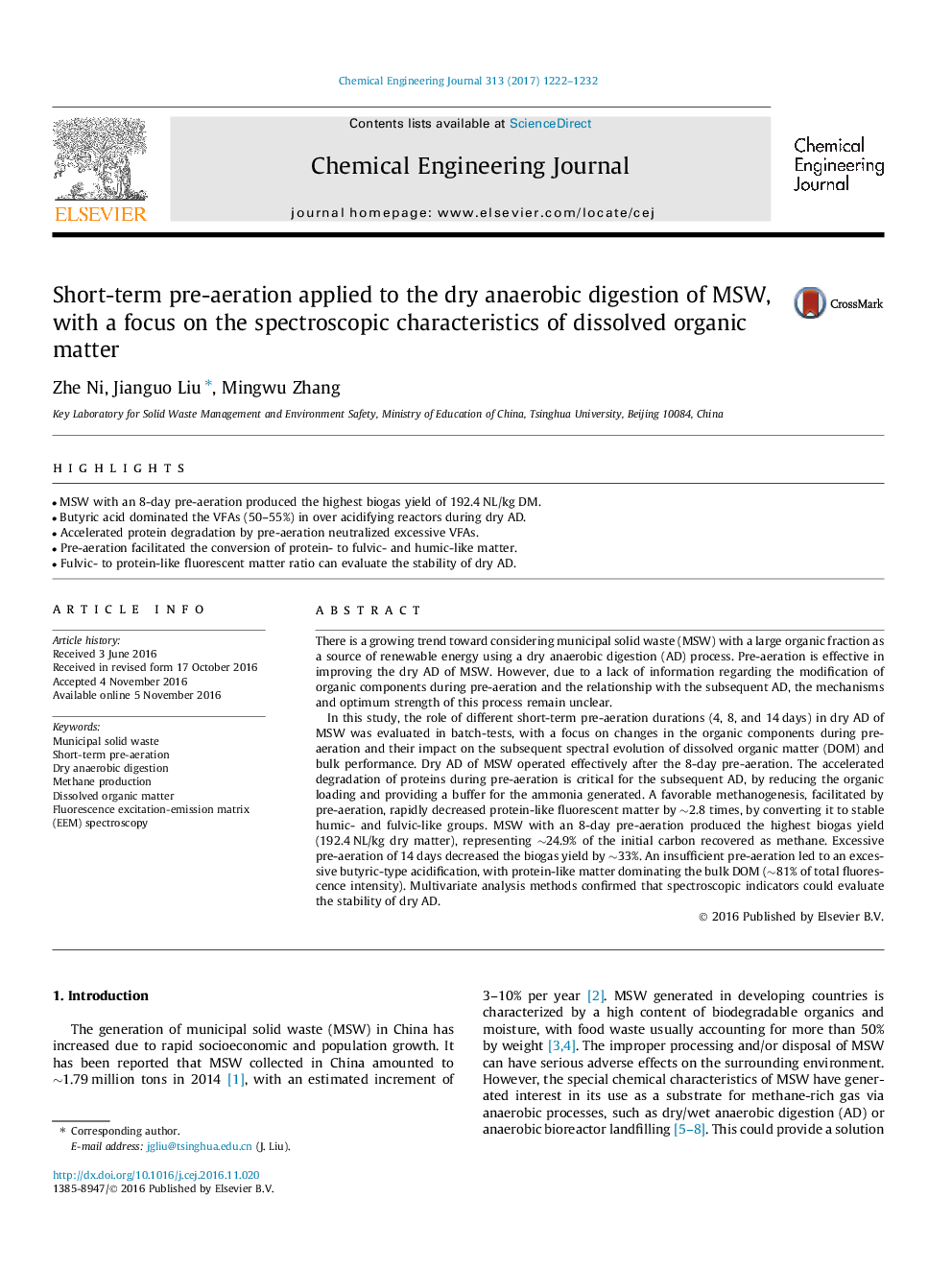| Article ID | Journal | Published Year | Pages | File Type |
|---|---|---|---|---|
| 6466689 | Chemical Engineering Journal | 2017 | 11 Pages |
â¢MSW with an 8-day pre-aeration produced the highest biogas yield of 192.4 NL/kg DM.â¢Butyric acid dominated the VFAs (50-55%) in over acidifying reactors during dry AD.â¢Accelerated protein degradation by pre-aeration neutralized excessive VFAs.â¢Pre-aeration facilitated the conversion of protein- to fulvic- and humic-like matter.â¢Fulvic- to protein-like fluorescent matter ratio can evaluate the stability of dry AD.
There is a growing trend toward considering municipal solid waste (MSW) with a large organic fraction as a source of renewable energy using a dry anaerobic digestion (AD) process. Pre-aeration is effective in improving the dry AD of MSW. However, due to a lack of information regarding the modification of organic components during pre-aeration and the relationship with the subsequent AD, the mechanisms and optimum strength of this process remain unclear.In this study, the role of different short-term pre-aeration durations (4, 8, and 14Â days) in dry AD of MSW was evaluated in batch-tests, with a focus on changes in the organic components during pre-aeration and their impact on the subsequent spectral evolution of dissolved organic matter (DOM) and bulk performance. Dry AD of MSW operated effectively after the 8-day pre-aeration. The accelerated degradation of proteins during pre-aeration is critical for the subsequent AD, by reducing the organic loading and providing a buffer for the ammonia generated. A favorable methanogenesis, facilitated by pre-aeration, rapidly decreased protein-like fluorescent matter by â¼2.8 times, by converting it to stable humic- and fulvic-like groups. MSW with an 8-day pre-aeration produced the highest biogas yield (192.4Â NL/kg dry matter), representing â¼24.9% of the initial carbon recovered as methane. Excessive pre-aeration of 14Â days decreased the biogas yield by â¼33%. An insufficient pre-aeration led to an excessive butyric-type acidification, with protein-like matter dominating the bulk DOM (â¼81% of total fluorescence intensity). Multivariate analysis methods confirmed that spectroscopic indicators could evaluate the stability of dry AD.
